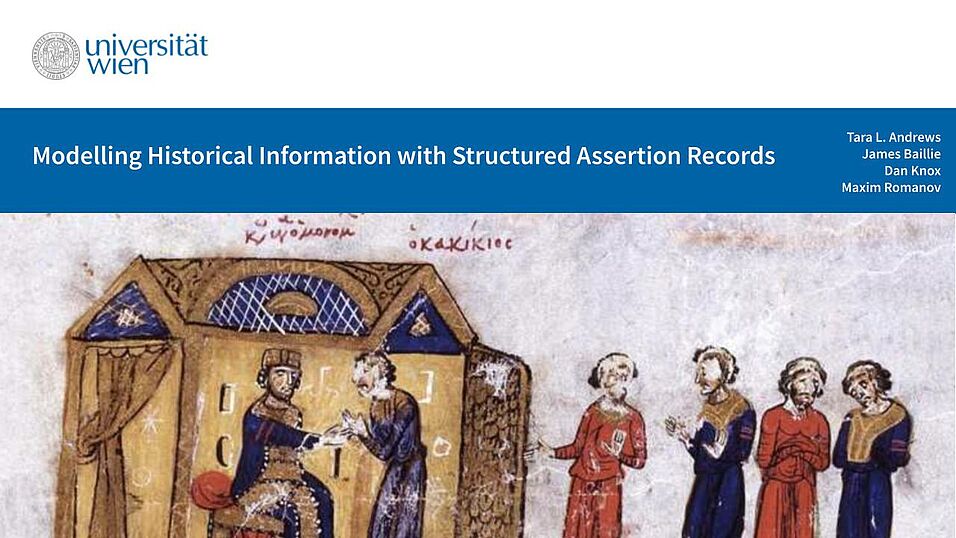We presented the core of RELEVEN’s “STAR” data model at this year’s European Association for Digital Humanities conference 2021. The conference was even more digital than planned this time, happening mainly virtually rather than at the host Siberian Federal University of Krasnoyarsk, Russia. We had a lively conference despite the pandemic and the various challenges of time zone and simultaneous translation, with team members chairing sessions on spatial analysis and network analysis methods for humanities data - as well as presenting our own paper on RELEVEN’s work in the Data Modelling long papers session.
With the conference having been pushed back due to Covid-19, our talk was an interesting point to revisit some of the earlier steps in developing the model, and going over again how it fits into the existing landscape of humanities data modelling. The questions of what we claim with data – presenting all the possibilities in our sources as factoid prosopographical models do, or presenting a single set of agreed facts as linked open data triples are intended to – come particularly sharply into focus when faced with both medieval and modern cacophonies of disagreement over the course of eleventh century events.
The neatness of the STAR (STructured Assertion Record) model for these situations, expanding the LOD triple of Subject, Object and Predicate to add Source and Authority as extra points, is that it can represent assertion and thus competing possibilities rather than simply a neutral concept of fact. As we were able to discuss in a lively round of questions after the talk, however, the model returns to some old challenges from a new angle – in particular, defining how and when someone puts authority to a statement can lead back to the distinction between someone’s authority being used to state that a source made a claim, versus someone putting their authority to the stronger claim that a particular claim is reliable. The great flexibility that the STAR offer also gives its own new problems and possibilities: one new issue to solve is working out how to avoid endlessly recursive (and labour consumptive) chains of assertions of the form “I believe that A recorded that B argued that X said that Y said...”
These challenges will be the focus of much forthcoming work from the RELEVEN team, with our current approaches looking at the concepts of Aggregations and Proxies from the OAI-ORE specification – these may respectively represent assertions and the clusters of data about which particular assertions are made, allowing neater and more manageable ways of storing complex arguments via the STAR system. We look forward to returning to a future EADH with further updates on how to tackle some of these areas with new data modelling solutions!

